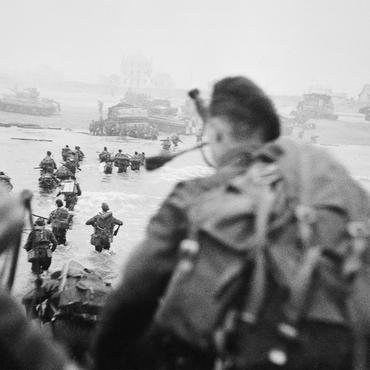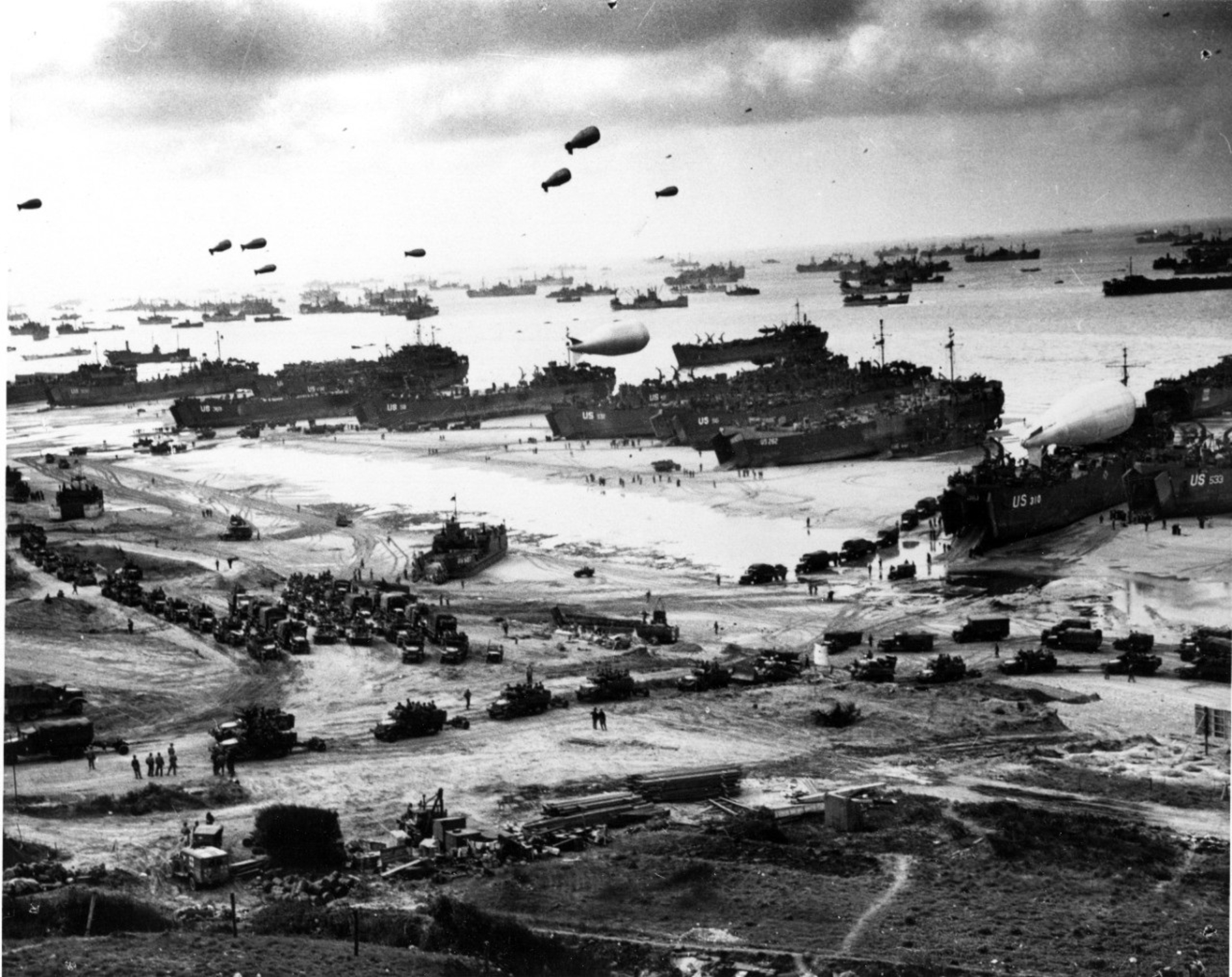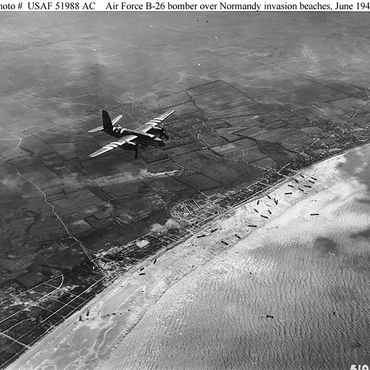
- Home
- An unprecedented endeavour
- D-Day
Launched under difficult meteorological conditions, with a force 6 west-southwest wind and sea state 4, the Allied offensive encountered substantial obstacles in some sectors.
A difficult start
The three British and American airborne divisions were dispatched in the early hours of 6 June, the clouds and strong winds dispersing the paratroopers. The Allied fleet was detected by the Germans shortly before two in the morning, but the arrival of the Airborne troops diverted the Germans from the beaches. The cruisers and battleships opened fire at 5:45, and the destroyers at 6:19, followed by the LCGs. Although the air and naval bombardments were not as destructive as anticipated (only 10 to 20 % of the coastal defences were hit in the British sector), they did undermine the morale of the German garrisons. In contrast, the bombing at Omaha left the defences intact.
The weather conditions were difficult. The 15-knot winds created swells of one to two metres that tested the troops disembarking and caused the tide to rise earlier than expected, submerging some of the underwater obstacles.
D-Day, sector by sector
At Utah Beach, the aerial bombardment was successful. The current carried the troops southward, where the German defences were more vulnerable. Most of the amphibious tanks managed to reach the beach. Military engineers quickly destroyed the obstacles not covered by the tide. However, some barges were lost or discharged too far from the beach, causing vehicles to get stuck.
The Pointe du Hoc sector, which was supposed to house six 155 mm enemy guns, required the 2nd Ranger Battalion to climb a cliff, 30-metres high. The attacking troops were surprised to discover that the guns had been removed from their gun pits. Nevertheless, due to their isolated position, the American detachment sustained severe casualties, enduring German counter-attacks until the following day.
The American landing on Omaha Beach ended in carnage. The topography of the site did not favour the Allies, who encountered nearly intact German defences and faced eight battalions instead of the four expected. Many men, often loaded with more than 30 kg of equipment, drowned after jumping from the barges. The swell caused the amphibious tanks to sink offshore, the current carried the barges eastward and the troops subsequently landed in areas without protection or equipment. However, some infantry managed to slip past enemy defences by scaling the cliffs. Later, naval artillery and the successfully landed heavy weapons overcame the German defences.
On Gold Beach, the British met little resistance, except in front of the fortified point of Le Hamel at Asnelle-sur-Mer. The hills overlooking Arromanches and Port-en-Bessin were taken on 7 June. Bayeux was liberated the same day.
At Juno Beach, rough seas delayed the landing by 10 minutes. Of 24 barges, 20 were damaged by unseen obstacles submerged by the tide. Given the failed aerial and naval bombardments, the German resistance remained strong, but the balance of power favoured the Allies (2,400 Canadians versus 400 Germans) and the troops were supported by 14 of the 19 amphibious tanks launched. Although the first wave suffered severe losses, the Allies quickly took Courseulles and Bernières.
On Sword Beach, German defences were weak. At 7:25, the first LCTs and LCAs landed amphibious tanks and specialised armoured vehicles that facilitated the troops’ assault. Ouistreham was quickly secured, notably with the help of the Kieffer commando, the only French ground force present in Normandy on D-Day.
Partners and authors
Associated media
Open Media Library

Artillery of the USS Nevada firing
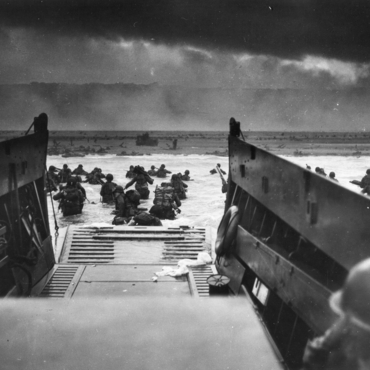
American troops landing on Omaha Beach
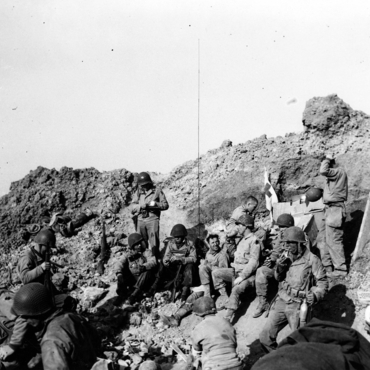
Rangers resting

American troops landing on Utah Beach
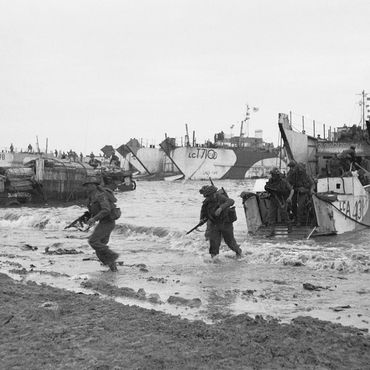
Commando landing from a Landing Craft Assault

Commando landing from a Landing Craft Infantry

Troops of the 3rd Infantry Division
